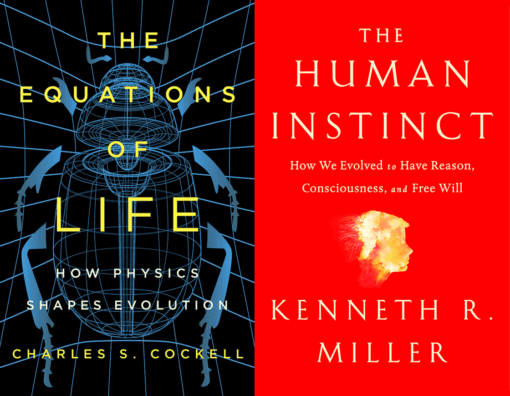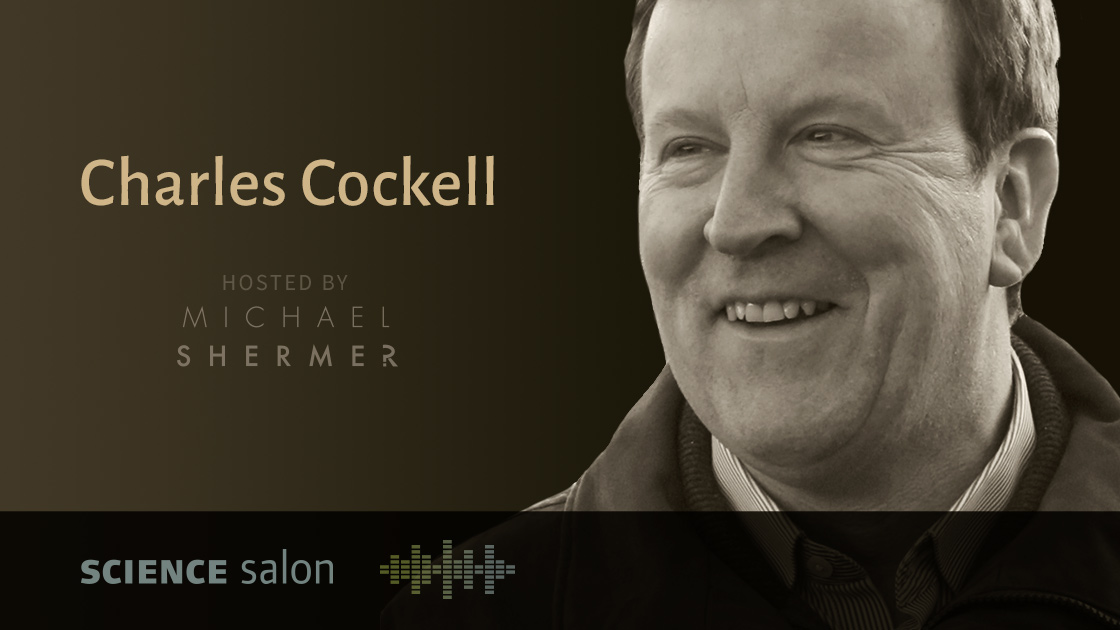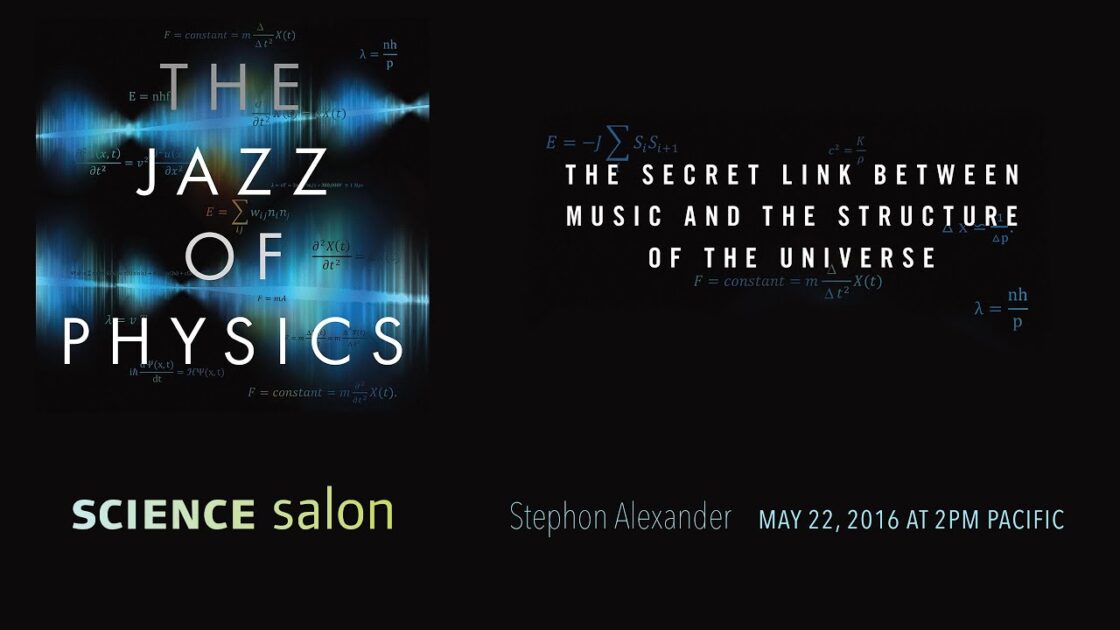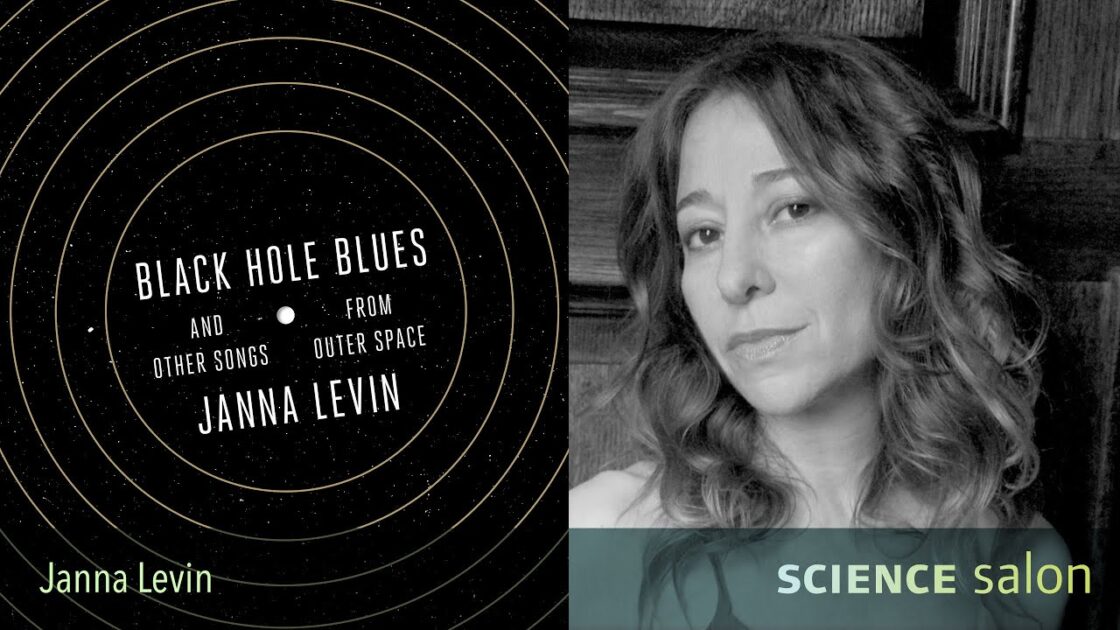In Science Salon # 37, Michael Shermer and Neil deGrasse Tyson take a deep dive into the history of science and war, and the strange but productive alliances that have been formed over the centuries—particularly those between astrophysicists and politicians, governments, military, and corporations.
Tags
-
browse by topic
physics
eSkeptic for September 12, 2018
The Inevitability of Intelligent Life?

Nathan H. Lents reviews The Equations of Life: How Physics Shapes Evolution by Charles S. Cockell, and The Human Instinct: How We Evolved to Have Reason, Consciousness, and Free Will by Kenneth R. Miller.
eSkeptic for June 27, 2018
In Science Salon # 27, Dr. Michael Shermer talks with Charles S. Cockell, Professor of astrobiology at the University of Edinburgh and the director of the UK Centre for Astrobiology.
Dr. Charles S. Cockell — The Equations of Life: How Physics Shapes Evolution

Shermer and Cockell discuss: the origins of life on earth; the possibility of finding life on Mars and, if we did, would it have something like DNA, albeit with different base pairs?; Fermi’s paradox: if the laws of physics and evolution are so common throughout the universe, and there are so many earth-like planets in our galaxy alone (estimated to be in the billions), where is everyone?; humanity becoming an interplanetary species (possibly the first), and if so what type…
Dr. Stephon Alexander — The Jazz of Physics: The Secret Link Between Music and the Structure of the Universe

Physicist and jazz saxophonist Dr. Stephon Alexander revisits the ancient realm where music, physics, and the cosmos were one. Playing the saxophone and improvising with equations, Alexander uncovered the connection between the fundamental waves that make up sound and the fundamental waves that make up everything else.
Dr. Janna Levin — Gravitational Waves, Black Holes and the Nature of the Cosmos

In 2016, the National Science Foundation made a thrilling announcement: gravitational waves—first predicted by Einstein as part of his general theory of relativity in 1916—had been detected for the first time. Astrophysicist Dr. Janna Levin tells the epic story of the scientific campaign to record these waves — the holy grail of modern cosmology.
Fine-Tuning and the Multiverse

In this essay, as a follow-up to his book, The Fallacy of Fine-Tuning: Why the Universe Is Not Designed for Us (in which he showed that, based on our knowledge of this universe alone, divine fine-tuning claims are without merit), Victor J. Stenger brings the arguments up-to-date with a discussion of the eternal multiverse hypothesis. This article was published in Skeptic magazine issue 19.3 in 2014. Order this back issue.
Flawed Scientific Geniuses on the Big Screen

Donald Prothero reviews two recent biographical films about scientists Alan Turing and Stephen Hawking.
Wizards, Aliens, and Starships: Physics and Math in Fantasy and Science Fiction
From teleportation and space elevators to alien contact and interstellar travel, science fiction and fantasy writers have come up with some brilliant and innovative ideas. Yet how plausible are these ideas? In this lecture from our archives, recorded in February 2014 as part of The Skeptics Society’s Distinguished Science Lecture Series, professor of physics, Dr. Charles Adler, delves into the most extraordinary details in science fiction and fantasy.
13-08-28
Lump together literally everything contained in ultimate reality. Now call it all by the simple name “Something.” Why is there “Something” rather than “Nothing”? Is not Nothing, no world, simpler and easier than any world; is it not so that Nothing would have been the least arbitrary and “most natural” state of affairs? In this week’s eSkeptic, Robert Lawrence Kuhn explores the essence of Nothing, or what he calls “Levels of Nothing.” This article appeared in Skeptic magazine issue 18.2…
The Particle at the End of the Universe: How the Hunt for the Higgs Boson Leads Us to the Edge of a New World
Scientists have just announced an historic discovery on a par with the splitting of the atom: the Higgs boson. The key to understanding why mass exists has been found. In this lecture, based on the book The Particle at the End of the Universe, Caltech physicist and acclaimed writer Sean Carroll takes you behind the scenes of the Large Hadron Collider at CERN to meet the scientists and explain this landmark event.
11-12-14
In this week’s eSkeptic, Michael Shermer reviews Margaret Wertheim’s Physics on the Fringe: Smoke Rings, Circlons, and Alternative Theories of Everything. This book review first appeared in the Wall Street Journal on December 10, 2011.
11-03-09
In this week’s eSkeptic, James N. Gardner reviews Brian Greenes’s book The Hidden Reality: Parallel Universes and the Deep Laws of the Cosmos.
Is God in the Equations?
In this book review Joe Cuchiara considers the validity of the new theories of emergence and complexity and how complex systems arise naturally from the bottom up through the natural forces of nature as emergent properties, instead of the traditional top down explanation of divine design. Herald Morowitz’s book The Theory of Everything is an all encompassing theory to explain the cosmos.
A Special Dual Event How Old is the Universe? and The Shape of Inner Space
In this special dual lecture event, Venderbilt University astronomer David Weintraub explains how old the universe is and how we know in an enthusiastic way. Following that lecture, Dr. Shing-Tung Yau tells the story of “Calabi-Yau manifolds,” — one of the smallest things you can possibly imagine — six-dimensional geometric spaces that may be more than a trillion times smaller than an electron. They might also be one of the defining features of our universe!
10-11-03
In this week’s eSkeptic, we present an article from Skeptic magazine vol. 2, no. 2 (1993) wherein physicist Milton Rothman examines the relationship between science and religion and the extent to which a scientist should apply his belief in realism to all aspects of our knowledge of the universe.
10-03-17
In this week’s eSkeptic, Kenneth Grubbs reviews The Greatest Show on Earth: The Evidence for Evolution by Richard Dawkins as well as and The Case for God by Karen Armstrong. In this week’s Skepticality, Swoopy talks with Sean Faircloth (the new Executive Director of the Secular Coalition for America) about some troubling current events.
The Great Afterlife
This debate between Deepak Chopra and Michael Shermer came about after the widely read and referenced debate the two had last year on the virtues and value of skepticism. Deepak and Michael thought it would be stimulating to have a debate on the topic. Michael read Deepak’s book and goes first in the debate, offering his assessment of the “proofs” presented in Deepak’s book, then Deepak responds.
09-11-11
In this week’s eSkeptic, Lloyd B. Lueptow asserts that the Large Hadron Collider experiments should be delayed or stopped while the risk/cost-benefit equation is sorted out in debates the public can comprehend. The only acceptable risk is zero when the cost is the possible destruction of planet Earth. This piece is followed with a rebuttal by Dr. Lawrence Krauss.
Black Holes Sing: Black Holes, Their Orbits & Gravitational Waves
Black Holes are the ultimate death state of very massive stars. Collapsing under their own weight, the dead cores will curve spacetime so strongly that not even light can escape. Black holes emit no light and reflect no light. They are dark against a dark sky and effectively invisible. When two black holes move in orbit around each other, they churn up the spacetime around them, emanating waves in the fabric of space itself…
SKEPTIC App
Whether at home or on the go, the SKEPTIC App is the easiest way to read your favorite articles. Within the app, users can purchase the current issue and back issues. Download the app today and get a 30-day free trial subscription.










